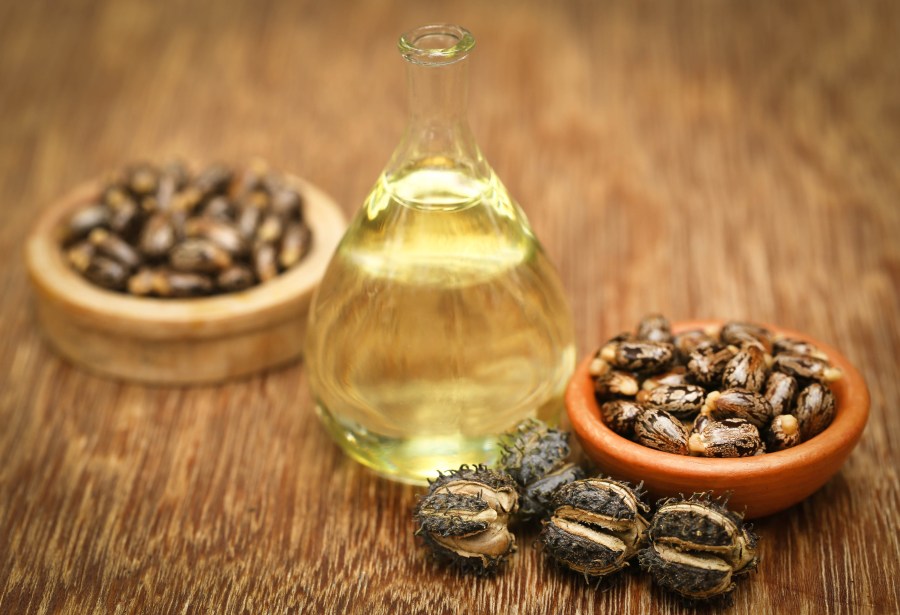Oil cleansing is a natural method that has been used for centuries to cleanse and rejuvenate the skin. The concept behind oil cleansing is that like dissolves like, which means that oil can help to dissolve the oil and dirt that accumulates on your skin without stripping it of its natural oils. In recent years, castor oil has gained popularity as a particularly effective oil for cleansing the skin. In this article, we will explore the benefits of oil cleansing with castor oil, how it works, and how you can incorporate it into your skincare routine.
What is castor oil?

Castor oil is a vegetable oil that is derived from the seeds of the castor plant, which is native to Africa and India. Castor oil is rich in ricinoleic acid, which is a fatty acid that has been shown to have anti-inflammatory and antibacterial properties. Castor oil also contains vitamin E, which is a powerful antioxidant that can help to protect the skin from damage caused by free radicals.
How does oil cleansing with castor oil work?
The theory behind oil cleansing is that the oil used for cleansing dissolves the oil that has accumulated on the skin, including dirt, makeup, and excess sebum. Castor oil is particularly effective for oil cleansing because it has a unique ability to penetrate deep into the pores and dissolve impurities.
When castor oil is used for oil cleansing, it can help to balance the skin’s natural oils, which can lead to clearer and more radiant skin. It is also a natural moisturizer that can help to soothe and hydrate the skin.
Choosing a high-quality castor oil
The quality and purity of castor oil can have a significant impact on its effectiveness for skincare. When choosing a castor oil for oil cleansing, there are a few things to consider to ensure you are getting a high-quality product.
First, look for a castor oil that is 100% pure and cold-pressed. This means that the oil has been extracted from the castor beans without the use of heat or chemicals, which can degrade the oil’s quality and purity.
Second, consider the source of the castor oil. Castor oil is primarily produced in India, Brazil, and China. Look for a castor oil that is sourced from a reputable supplier and has undergone testing for purity and quality.
Third, pay attention to the color and consistency of the castor oil. High-quality castor oil is typically a pale yellow or colorless liquid with a thick, viscous consistency. If the oil is dark or has a strange odor, it may be lower in quality and effectiveness.
Fourth, consider purchasing organic castor oil. Organic castor oil is produced without the use of pesticides or other harmful chemicals, which can be absorbed into the skin during oil cleansing.
Finally, read reviews and do your research before purchasing castor oil. Look for feedback from other customers who have used the product for oil cleansing, and consider their experiences when making your purchase.
In summary, choosing a high-quality castor oil is important for ensuring the effectiveness and safety of oil cleansing. Look for a castor oil that is 100% pure and cold-pressed, sourced from a reputable supplier, has a pale yellow or colorless color and a thick, viscous consistency, and preferably organic. Reading reviews and doing research before purchasing can also help you find a high-quality product.
Benefits of oil cleansing with castor oil

- Gentle and Effective Cleansing: Oil cleansing with castor oil is a gentle and effective way to cleanse the skin. Unlike harsh cleansers that can strip the skin of its natural oils, castor oil helps to maintain the skin’s natural moisture barrier while dissolving impurities.
- Natural Moisturizing Properties: Castor oil is a natural moisturizer that can help to hydrate and soften the skin. It is particularly beneficial for those with dry or sensitive skin.
- Anti-inflammatory Properties: The anti-inflammatory properties of castor oil can help to reduce redness and irritation on the skin. This makes it an effective ingredient for those with acne-prone or sensitive skin.
- Acne-Fighting Properties: Castor oil has been shown to have antibacterial properties that can help to fight acne-causing bacteria. It can also help to regulate sebum production, which can help to prevent breakouts.
- Reduces Appearance of Fine Lines and Wrinkles: Castor oil is rich in vitamin E, which is a powerful antioxidant that can help to protect the skin from damage caused by free radicals. Free radicals are molecules that can cause damage to the skin, leading to premature aging. By protecting the skin from free radicals, castor oil can help to reduce the appearance of fine lines and wrinkles.
Potential side effects and risks
While oil cleansing with castor oil is generally safe for most people, there are potential side effects and risks to be aware of, especially for those with sensitive skin or allergies.
One possible side effect is skin irritation or allergic reactions. Castor oil is a relatively thick oil, and some people may find it too heavy or greasy for their skin. Additionally, castor oil contains a compound called ricin, which can be toxic if ingested. While ricin is not present in pure castor oil, there is a small risk of contamination during the manufacturing process. Therefore, it is important to choose a high-quality, pure castor oil from a reputable source.
If you experience any redness, itching, or discomfort after using castor oil for oil cleansing, stop using it immediately and consult with a dermatologist or healthcare professional.
Some people may find that oil cleansing with castor oil can exacerbate existing skin conditions, such as acne or eczema. If you have any skin conditions, it is important to talk to your doctor before trying oil cleansing with castor oil or any new skincare products.

How to incorporate oil cleansing with castor oil into your skincare routine
- Choosing the Right Oil Blend: To get the most out of oil cleansing with castor oil, it is important to choose the right oil blend. The amount of castor oil you use will depend on your skin type. Those with oily skin should use a blend with more castor oil, while those with dry skin should use a blend with less castor oil. A common ratio is 1 part castor oil to 3 parts carrier oil, such as jojoba, almond, or avocado oil.
- Step-by-Step Guide to Oil Cleansing: To oil cleanse with castor oil, start by massaging a small amount of the oil blend onto your dry face, using gentle circular motions. Take your time to massage the oil into your skin, paying attention to any areas that need extra attention. You can even use a warm, damp washcloth to help steam the skin and further loosen any impurities. After a few minutes, rinse the washcloth in warm water and use it to gently wipe away the oil. Repeat this process until all the oil is removed from your skin.
- Follow-up with a Gentle Cleanser and Moisturizer: While oil cleansing can effectively remove dirt and impurities from the skin, it is still important to follow up with a gentle cleanser to remove any remaining residue. You can also use a toner to further cleanse and balance your skin. Finish with a moisturizer to seal in hydration and protect your skin.

Ratio of castor oil to carrier oil
The ratio of castor oil to carrier oil can vary depending on individual skin needs. Generally, the amount of castor oil used in oil cleansing ranges from 10% to 50%, depending on skin type. Castor oil is a thick, heavy oil that can be drying if used in excess. Carrier oils, on the other hand, are lighter and more moisturizing, making them an excellent addition to the cleansing process.
For oily or acne-prone skin, a higher percentage of castor oil may be beneficial, as it can help to dissolve excess oil and unclog pores. A good starting point is a mixture of 30% castor oil and 70% carrier oil, such as jojoba, grapeseed, or sweet almond oil.
For dry or sensitive skin, a lower percentage of castor oil may be more appropriate, as it can be drying if used in excess. A mixture of 10% castor oil and 90% carrier oil is a good starting point for those with dry or sensitive skin. Carrier oils such as avocado, apricot kernel, or rosehip oil can provide additional moisturization for dry skin.
For normal or combination skin, a mixture of 20% castor oil and 80% carrier oil may be suitable. Experimenting with different ratios can help you find the right balance for your skin type.
Keep in mind that these ratios are just a starting point, and you may need to adjust them based on your individual skin needs. It is important to listen to your skin and adjust your cleansing routine accordingly.
In summary, the ratio of castor oil to carrier oil can vary depending on individual skin needs. Experimenting with different ratios can help you find the right balance for your skin type. A good starting point is a mixture of 30% castor oil and 70% carrier oil for oily or acne-prone skin, 10% castor oil and 90% carrier oil for dry or sensitive skin, and 20% castor oil and 80% carrier oil for normal or combination skin.
Oil cleansing with castor oil is an effective and natural way to cleanse and rejuvenate the skin. Castor oil’s unique ability to penetrate deep into the pores and dissolve impurities makes it an excellent ingredient for oil cleansing. It is also a natural moisturizer with anti-inflammatory and antibacterial properties that can help to soothe and protect the skin. By incorporating oil cleansing with castor oil into your skincare routine, you can achieve clearer, more radiant skin without the use of harsh chemicals.
Sources:
- S. Kumar, S. Kumar, and R. Jaiswal, “Ricinoleic Acid: A Boon for Dermatological Disorders,” J Clin Diagn Res, vol. 11, no. 2, pp. ZE10-ZE13, Feb. 2017.
- J. L. Penniston and J. Nakada, “Gastric Lavage in the Management of Overdose and Poisoning,” Curr Opin Crit Care, vol. 20, no. 6, pp. 593-597, Dec. 2014.
- M. P. Huntley and L. K. Barnard, “A Systematic Review of the Antioxidant, Anti-inflammatory, and Immunomodulatory Effects of Castor Oil,” Evid Based Complement Alternat Med, vol. 2019, pp. 1-9, Sep. 2019.
- S. K. Maheshwari, S. S. Singh, and V. K. Prasad, “Antibacterial Activity of Ricinus communis L. Seed Oil Against Clinical Isolates of Staphylococcus aureus,” J Microbiol Biotechnol Res, vol. 1, no. 3, pp. 117-124, Sep. 2011.







